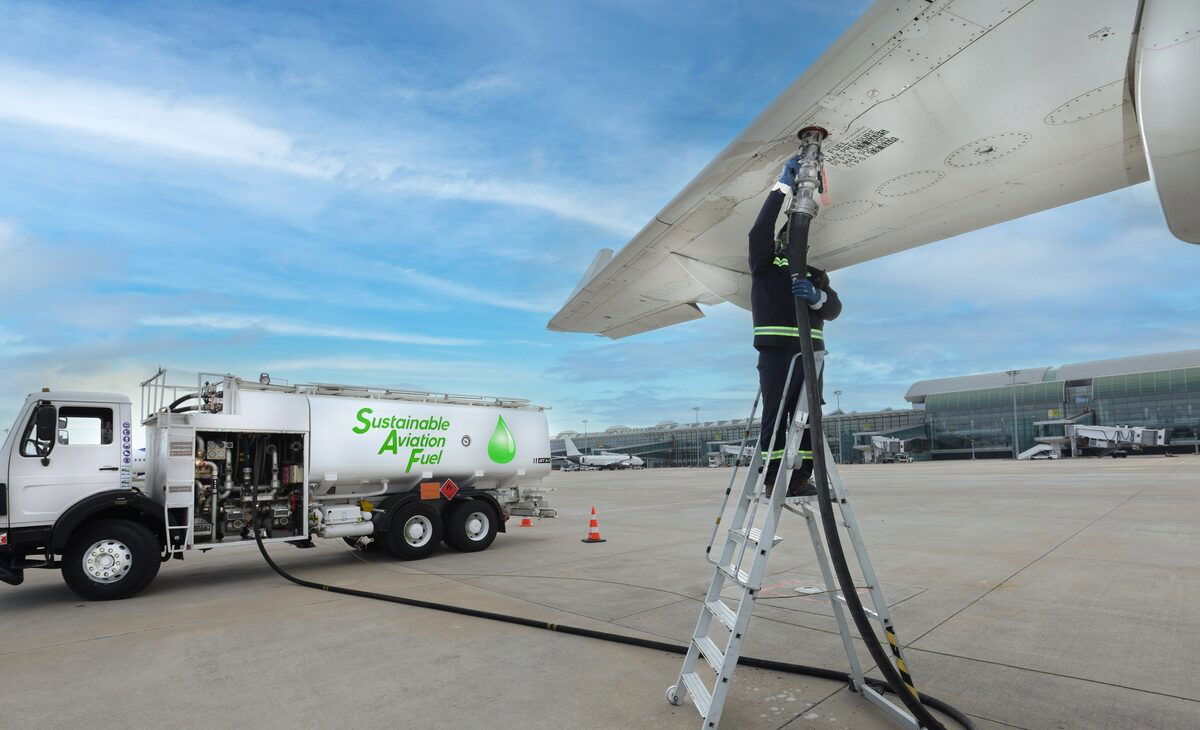Refueling aircraft using sustainable aviation fuel. Credit: Bulent camci – Shutterstock
Two green hydrogen plants in Malaga, Spain, are scheduled to begin producing sustainable aviation fuel (SAF) in 2029, marking a major step towards cleaning air travel.
Repsol will lead a EUR 1.5 billion project with EU funding to supply 200,000 tonnes of SAF per year and reduce aircraft emissions by up to 90 percent. Located in Axarquia, near Malaga Airport, the facility is in line with Spain’s hydrogen strategy and is expected to boost economic growth and create jobs.
Project details and schedule
Repsol, together with partners such as Enagas, plans to build two 100MW electrolysis plants in the Axarquia region of Malaga. Construction is scheduled to begin in 2026, with operations planned for 2029. The €1.5 billion investment, including €300 million from the EU Innovation Fund, will support Spain’s goal of 4 GW of electrolysis capacity by 2030, as outlined in the PERTE plan.
What is a SAF and how is it created?
These plants primarily use electrolysis powered by renewable energy such as sunlight to produce green hydrogen. The hydrogen is combined with the captured CO₂ to produce a type of synthetic kerosene with nearly zero emissions. According to IATA standards, this process achieves a lifecycle greenhouse gas reduction of 85%. Malaga receives 2,500 hours of sunshine per year, making it an ideal location and expected to reduce electricity costs by 50%.
Environmental and economic benefits
Green hydrogen SAF has the potential to reduce aircraft carbon dioxide emissions by 80 to 90 percent, supporting the EU’s 6 percent SAF mix requirement in 2030. Locally, the project is expected to create 1,500 construction jobs and 300 permanent roles, and increase Malaga’s GDP by €200 million annually, according to an Andalusian impact study. This will revitalize the eastern region of Malaga, which has suffered agricultural decline due to a series of severe droughts.
Challenges in scaling up production
However, high costs and supply chain bottlenecks pose risks. The cost of the electrolyzer is €1,200 per kW and 20% of the components are facing shortages. Grid upgrades will be needed to deal with fluctuations in renewable energy sources and sudden changes in electricity flows, which are said to be the cause of Spain’s April 2025 blackout, but EU policies such as the €40 billion hydrogen bank will offset 40% of the costs and ease the burden on private investment.
Global context and impact on airlines
The Malaga project follows other global precedents such as California’s H2@Scale, which will build 15 SAF plants worldwide by 2024, according to the IEA. The price of SAF could fall to €1.5 per liter by 2030, boosting its adoption by airlines and meeting the projected increase in demand of 17 billion liters. The proximity to Málaga’s airport and seaport increases the possibility of exports to the EU’s aviation centres.
For the economy of the province of Málaga, this project has the potential to enable a sustainable departure from dependence on tourism and real estate investment, by exploiting natural resources with relatively low environmental impact. Provided, of course, that there is enough housing available to accommodate the influx of skilled workers needed.








